- Home
- Quizzes
- My Quiz Activity
- Newsletters
- Sports Betting
- MY FAVORITES
- Add Sports/Teams
- SPORTS
-
NFL
- NFL Home
- Arizona Cardinals
- Atlanta Falcons
- Baltimore Ravens
- Buffalo Bills
- Carolina Panthers
- Chicago Bears
- Cincinnati Bengals
- Cleveland Browns
- Dallas Cowboys
- Denver Broncos
- Detroit Lions
- Green Bay Packers
- Houston Texans
- Indianapolis Colts
- Jacksonville Jaguars
- Kansas City Chiefs
- Las Vegas Raiders
- Los Angeles Chargers
- Los Angeles Rams
- Miami Dolphins
- Minnesota Vikings
- New England Patriots
- New Orleans Saints
- New York Jets
- New York Giants
- Philadelphia Eagles
- Pittsburgh Steelers
- San Francisco 49ers
- Seattle Seahawks
- Tampa Bay Buccaneers
- Tennessee Titans
- Washington Commanders
-
MLB
- MLB Home
- Arizona Diamondbacks
- Atlanta Braves
- Baltimore Orioles
- Boston Red Sox
- Chicago White Sox
- Chicago Cubs
- Cincinnati Reds
- Cleveland Guardians
- Colorado Rockies
- Detroit Tigers
- Houston Astros
- Kansas City Royals
- Los Angeles Angels
- Los Angeles Dodgers
- Miami Marlins
- Milwaukee Brewers
- Minnesota Twins
- New York Yankees
- New York Mets
- Oakland Athletics
- Philadelphia Phillies
- Pittsburgh Pirates
- San Diego Padres
- San Francisco Giants
- Seattle Mariners
- St. Louis Cardinals
- Tampa Bay Rays
- Texas Rangers
- Toronto Blue Jays
- Washington Nationals
-
NBA
- NBA Home
- Atlanta Hawks
- Boston Celtics
- Brooklyn Nets
- Charlotte Hornets
- Chicago Bulls
- Cleveland Cavaliers
- Dallas Mavericks
- Denver Nuggets
- Detroit Pistons
- Golden State Warriors
- Houston Rockets
- Indiana Pacers
- Los Angeles Clippers
- Los Angeles Lakers
- Memphis Grizzlies
- Miami Heat
- Milwaukee Bucks
- Minnesota Timberwolves
- New Orleans Pelicans
- New York Knicks
- Oklahoma City Thunder
- Orlando Magic
- Philadelphia 76ers
- Phoenix Suns
- Portland Trail Blazers
- Sacramento Kings
- San Antonio Spurs
- Toronto Raptors
- Utah Jazz
- Washington Wizards
-
NHL
- NHL Home
- Anaheim Ducks
- Arizona Coyotes
- Boston Bruins
- Buffalo Sabres
- Calgary Flames
- Carolina Hurricanes
- Chicago Blackhawks
- Colorado Avalanche
- Columbus Blue Jackets
- Dallas Stars
- Detroit Red Wings
- Edmonton Oilers
- Florida Panthers
- Los Angeles Kings
- Minnesota Wild
- Montreal Canadiens
- Nashville Predators
- New Jersey Devils
- New York Islanders
- New York Rangers
- Ottawa Senators
- Philadelphia Flyers
- Pittsburgh Penguins
- San Jose Sharks
- Seattle Kraken
- St. Louis Blues
- Tampa Bay Lightning
- Toronto Maple Leafs
- Vancouver Canucks
- Vegas Golden Knights
- Washington Capitals
- Winnipeg Jets
- NCAAF
- NCAAM
- Boxing
- Entertainment
- Lifestyle
- Golf
- MMA
- Soccer
- Tennis
- Wrestling
- More Sports
- RESOURCES
- My Account
- YB on Facebook
- YB on Twitter
- YB on Flipboard
- Contact Us
- Privacy Policy
- Terms of Service
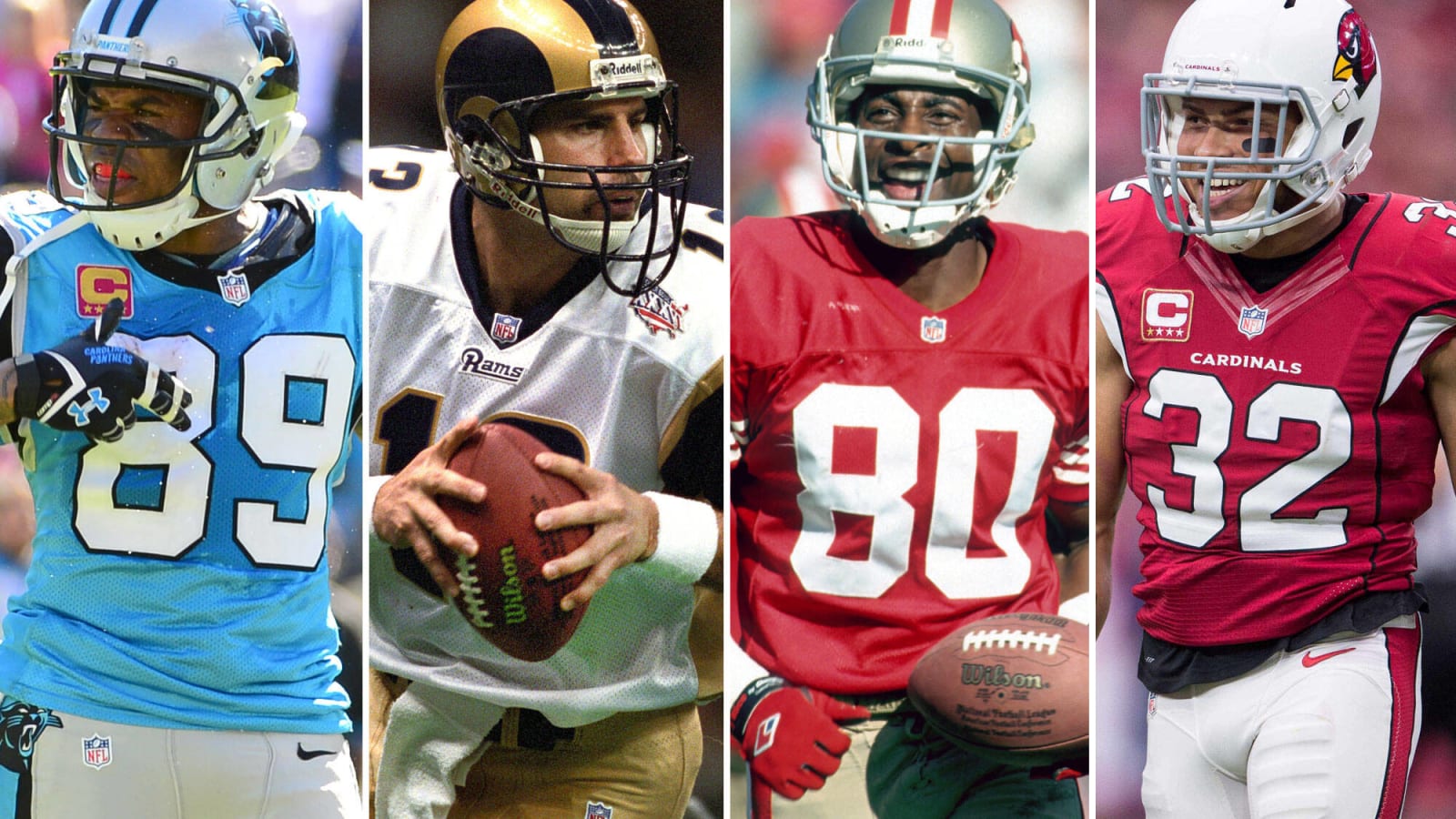
The worst cap casualty decisions in NFL free agency history
The salary cap annually forces teams into tough decisions, leading to quality players unexpectedly becoming free agents. These cuts can come back to bite teams, with vets eager to prove their ex-employers wrong. Ranked by future impact and teams' issues replacing them, here are the top examples of players rebounding after being designated cap casualties.
25. Kevin Greene, San Francisco 49ers

The 49ers added two future Hall of Famers on defense in 1997. Both were gone after one season. Greene and Rod Woodson trekked to San Francisco as free agents, and the 49ers led the NFL in total defense en route to the NFC championship game. The 49ers saved $5.9 million by cutting both veterans in 1998, but their defense regressed to 23rd overall. Greene returned to the Panthers and added another Pro Bowl to his resume. Between his age-36 and age-37 seasons with Carolina, the edge-rushing icon combined to compile 27 sacks on his way to retirement.
24. Darrelle Revis, Tampa Bay Buccaneers

This cap-casualty decision directly impacted the 2014 Super Bowl chase. The Bucs traded a first-round pick and change for Revis in 2013 and authorized a six-year, $96 million extension. With a new GM and head coach in the building a year later (Jason Licht and Lovie Smith), the Bucs bailed on Revis before a roster bonus became due. Revis, who was recovering from a torn ACL in 2013, bounced back on a one-year, $12M Patriots deal. The formerly dominant Jet provided an upgrade on Aqib Talib in New England, which almost certainly does not win Super Bowl XLIX without Revis' contributions. Of course, Revis' resurgence only lasted one season.
23. Ndamukong Suh, Miami Dolphins
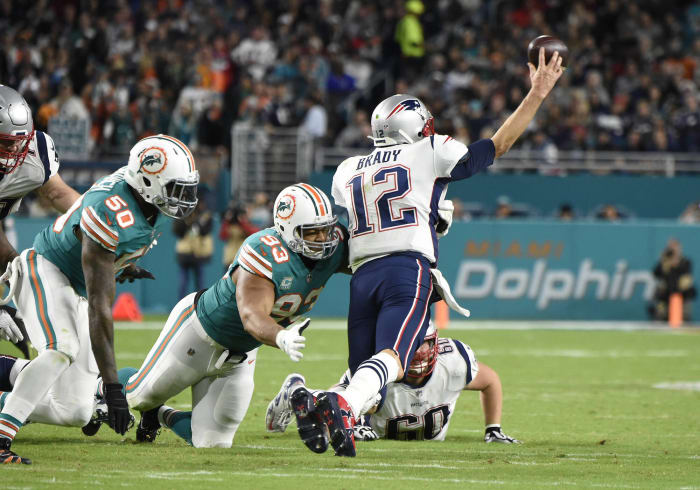
The contract the Dolphins gave Suh in 2015 provided a sign the team had gone too far and needed to curtail the reckless spending that had largely defined it under owner Stephen Ross. But Suh, at least, was largely effective on his megadeal. Miami cutting the All-Decade defensive tackle three years into the six-year, $114 million accord came in March 2018, a year before Chris Grier and Brian Flores' teardown. Suh has since started in two Super Bowls, providing the Rams and Buccaneers with a menacing hired gun upfront.
22. Elvis Dumervil, Denver Broncos

The Broncos struggled to live down an infamous March 2013 sequence for a bit. Dumervil, a seven-year Bronco who formed an elite pass-rushing duo with Von Miller from 2011-12, agreed to a pay cut at the 11th hour. But his agent's fax of the revised terms did not arrive until after the deadline for the defensive end's $12 million 2013 salary to become guaranteed. This debacle prompted the Broncos to cut Dumervil. He soon teamed with Terrell Suggs and earned All-Pro acclaim as a Raven. Miller struggled in 2013, incurring a six-game suspension, being overweight upon return, and suffering an ACL tear. Shaun Phillips helped the AFC champs' pass rush, but Dumervil was missed.
21. Charles Woodson, Green Bay Packers
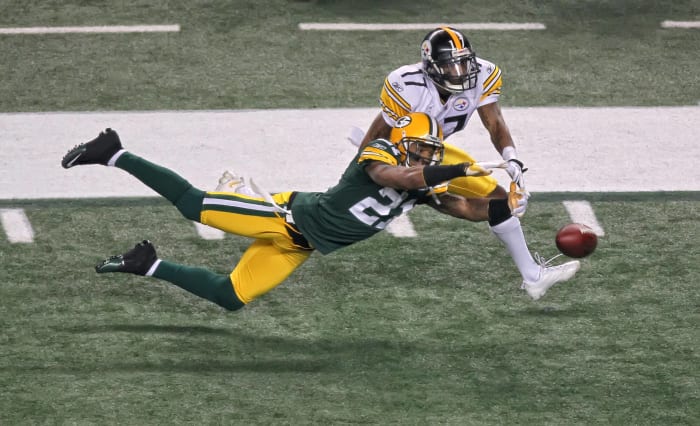
Several safeties have done well to bounce back from cap-casualty statuses. Charles Woodson, the second Hall of Fame-bound Woodson to make a successful cornerback-to-safety transition, continued to play well after Green Bay cut him in February 2013. The Packers ditched Woodson's $9 million 2013 cap number, but they regressed on defense in 2013 -- a season that began three years of agonizing playoff exits that involved crunch-time defensive shortcomings. Woodson spent his final three years back with the Raiders, finishing up that run with a Pro Bowl at age 39 and solidifying first-ballot Canton access.
20. Keenan McCardell, Jacksonville Jaguars
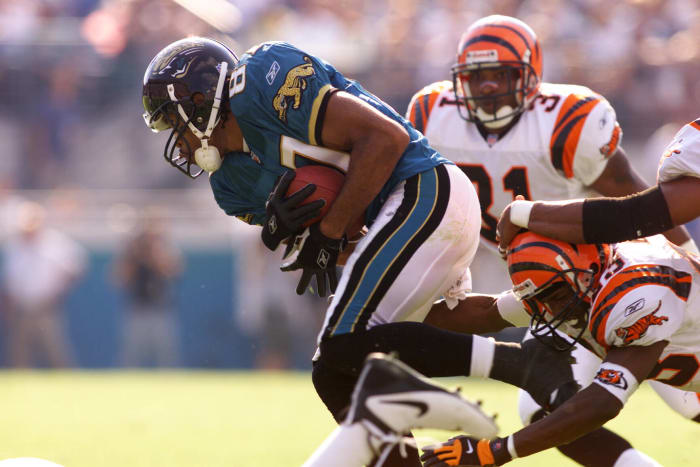
This release would look better had the Jaguars' repeated attempts to acquire a successor not sputtered. In cap trouble by 2002, the Jags disbanded their elite McCardell-Jimmy Smith wideout tandem, saving nearly $3 million by jettisoning Smith's sidekick. After the release, McCardell, then 32, said he thought he could play five more years. He made it six. The Buccaneers scooped up McCardell via a four-year, $10M deal. To cap his first Tampa Bay season, McCardell caught two touchdowns in Super Bowl XXXVII. He added a 1,100-yard Pro Bowl season in 2003. The Jags used top-10 picks on wideouts Reggie Williams and Matt Jones in 2004 and '05; neither lasted long.
19. Jeremiah Trotter, Washington
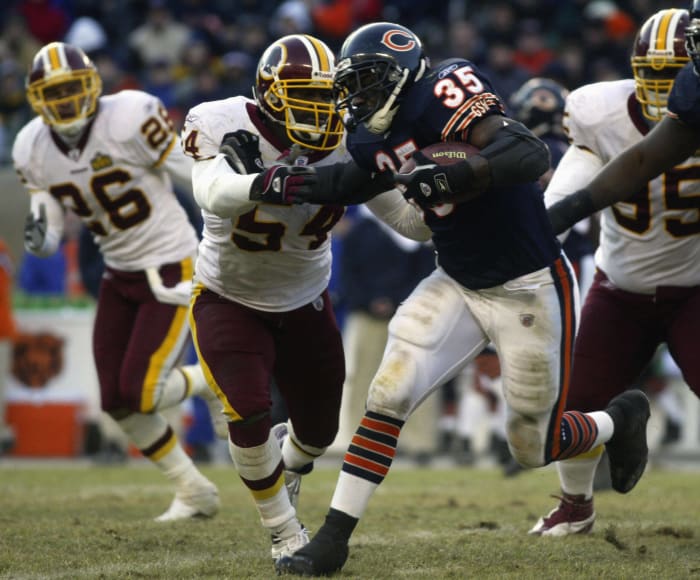
The priciest free agent signing of 2002, Trotter did not live up to his seven-year, $36 million Washington contract. Washington made him a post-June 1 cut in 2004 but saw this decision benefit a rival. The Eagles, with whom the linebacker made the Pro Bowl in 2000 and 2001, re-signed Trotter to a low-cost deal. Philly went on a run to Super Bowl XXXIX after inserting the run-stopping inside 'backer into its lineup. Trotter made the next two Pro Bowls and signed an Eagles extension. Washington also lost Antonio Pierce in free agency in 2005; Pierce went on to anchor the Super Bowl champion Giants' linebacking corps.
18. Sam Adams, Baltimore Ravens
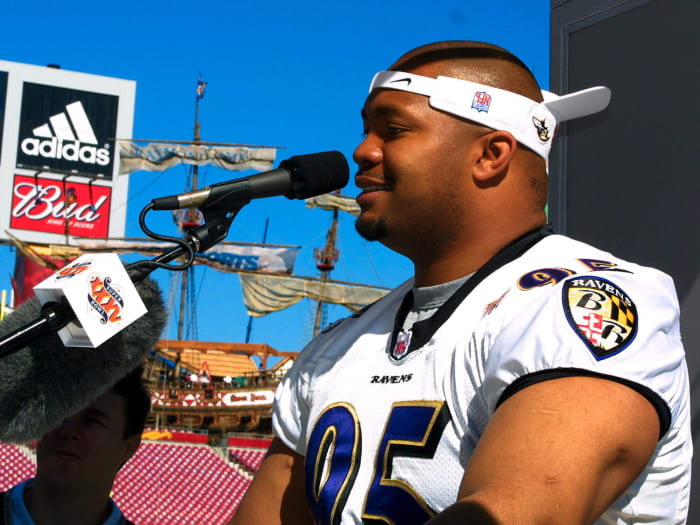
The Ravens gutted their roster with a wave of cuts in February 2002, removing Super Bowl XXXV starters Shannon Sharpe, Rod Woodson, Qadry Ismail, and Rob Burnett from their payroll. Baltimore also cut Adams, who had formed a mammoth D-tackle duo with Tony Siragusa, allowing Ray Lewis to create second-level havoc. The Ravens wanted Adams back and offered him a deal worth more than $2.5 million annually. A better offer led Adams to Oakland, and he helped the Raiders to Super Bowl XXXVII. Adams played just one Raiders season, soon anchoring the D-lines for quality Bills defenses en route to the Pro Bowl. He played until 2007.
17. Vinny Testaverde, Baltimore Ravens

The Ravens maximized their defensive talent in 2000, but quarterback stability eluded them for a decade after Testaverde's 1998 release. Supplanting Bernie Kosar in Cleveland, the former No. 1 overall pick stayed with the Browns through their Ravens transition. Testaverde's 33 TD passes in 1996 remained a Ravens record for 23 years, but Baltimore made him a post-June 1 cut two years later. Testaverde landed with the Jets and piloted them to the 1998 AFC title game. He remained a starter into the 2002 season, at 39. During that time, the Ravens cycled through several QBs, with the transitions limiting a historically loaded defense.
16. Antrel Rolle, Arizona Cardinals
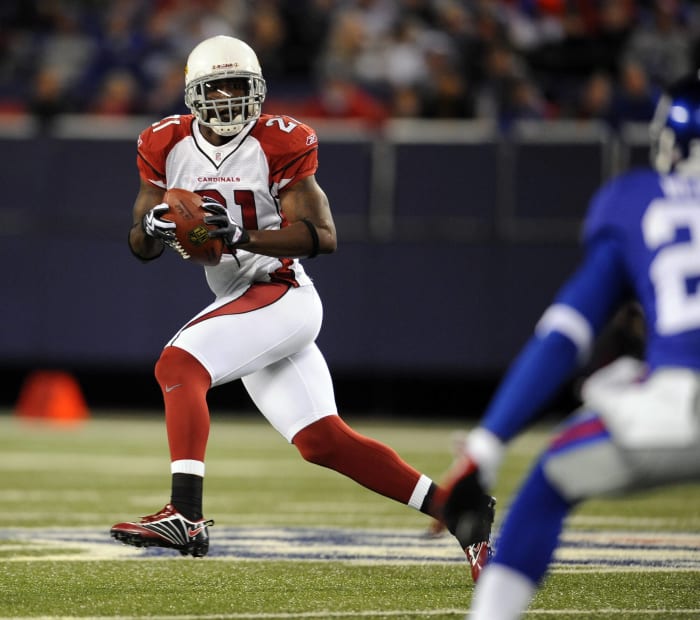
Despite Rolle notching three pick-sixes as a cornerback in 2007, the Cardinals moved him to safety in '08. Rolle enjoyed success at the new position, starting six Cardinal playoff games from 2008-09. But Arizona released the five-year veteran in March 2010, rather than pay an $8 million salary. Rolle relocated to New York and became a key piece for the Giants. The younger of the NFL's two Rolle brothers, Antrel made the Pro Bowl in his first Giants season and started throughout Big Blue's 2011 run to the Super Bowl XLVI title. Missing Arizona's tough road between Kurt Warner and Carson Palmer, Rolle added a Pro Bowl 2013 season as well.
15. John Lynch, Tampa Bay Buccaneers

In 2004, the Buccaneers separated from their defensive line and secondary linchpins, allowing Warren Sapp to walk in free agency and cutting Lynch (no pun intended). Tampa Bay GM Bruce Allen refused Lynch's request to restructure his deal, which ran through 2005. The Bucs decided to move on from the 32-year-old safety. While the Allen- and Jon Gruden-led staff was right about Sapp, who declined quickly in Oakland, Lynch thrived in Denver. The hard-hitting safety went 4-for-4 in Pro Bowls as a Bronco and teamed with Champ Bailey in a two-Hall of Famer secondary, one that helped the team to the 2005 AFC championship game.
14. DeMarcus Ware, Dallas Cowboys

One of the NFL's signature pass-rushing pairs formed a year after Dumervil's fax fiasco, and a similar path led Ware away from the team that drafted him. The Cowboys asked Ware to take a pay cut; Ware's refusal led to his release. The Broncos, amid a defensive overhaul that included deals for Aqib Talib and T.J. Ward to start the 2014 free agency period, added Ware on a three-year, $30 million deal. Ware and Von Miller, a Dallas native who cheered on the longtime Cowboy growing up, led the Broncos to a Super Bowl title in their second season together. The Cowboys drafted DeMarcus Lawrence in Round 2, but it took him years to find his footing.
13. Morten Andersen, New Orleans Saints

The Saints' kicker from 1982-94, Andersen joined the rival Falcons after a summer 1995 release. The Saints were expected to huddle up with Andersen about a new contract, but before that commenced, the Falcons pounced on the future Hall of Famer. Atlanta signed Andersen that July and cut accomplished incumbent Norm Johnson. With the Falcons, Andersen rebounded after a shaky 1994. The Danish left-footed striker earned his third All-Pro honor in his first Atlanta season, which included a win over the Saints featuring three 50-plus-yard field goals. In 1998, Andersen nailed an overtime game-winner to send the Falcons to Super Bowl XXXIII.
12. Steve Smith, Carolina Panthers

For most of Cam Newton's career, the Panthers lacked receiver talent. The team's fork-in-the-road moment here came when it cut Smith in March 2014. The move came with Smith just shy of his 35th birthday, and he was coming off a down 2013 season. Newton sure could have used the cornerstone Panther going forward. Smith posted a 1,000-yard season in his first Ravens campaign -- one that included a 139-yard, two-TD game against the Panthers -- and remained a productive supporting-caster through 2016. Missing on 2014 first-rounder Kelvin Benjamin, the Panthers could not pair Greg Olsen with much at receiver during this otherwise successful span.
11. Jerry Rice, San Francisco 49ers
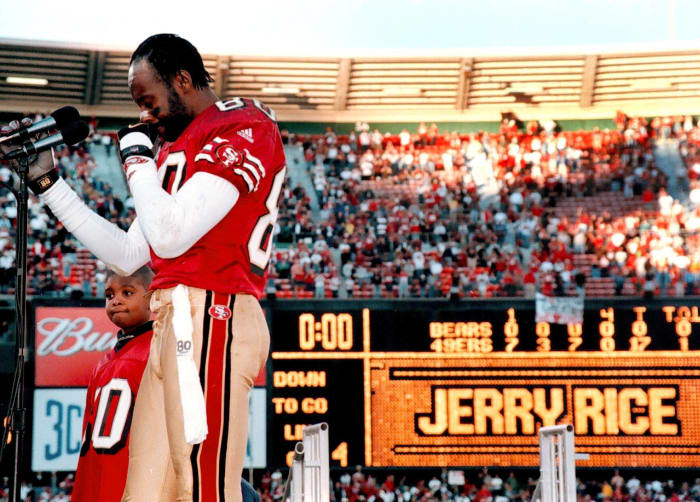
Despite signing their legendary wide receiver to an extension that ran through 2003, the 49ers let Rice know early they wanted to cut ties. This led to a farewell game in December 2000, one Terrell Owens hijacked by breaking the NFL's single-game reception record. Rice became a post-June 1 cut in 2001. The 49ers balked at paying a 39-year-old wideout $4.1 million, but Rice proved them wrong with the Raiders. Rice posted 1,100-plus receiving yards in 2001 and '02, playing a lead role in Oakland's Super Bowl XXXVII trip. Owens' younger sidekicks could not provide a similar spark for improved early-2000s 49ers teams.
10. DeSean Jackson, Philadelphia Eagles
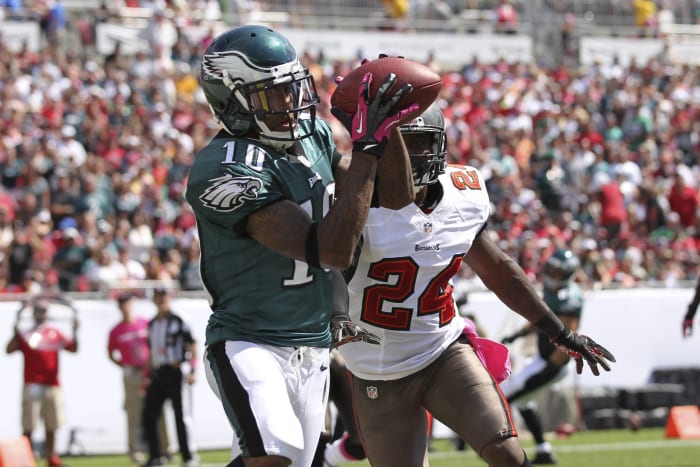
Jackson made three Pro Bowls during his first Eagles stint, establishing himself as one of the NFL's greatest deep threats. In 2014, however, the then-Chip Kelly-led Eagles moved on two years into a five-year extension. Citing off-field issues Jackson disputed, the Eagles cut the explosive target at age 27. He purposely signed with a rival. Despite Robert Griffin III's swift decline, Jackson led the NFL in yards per reception twice in his three Washington seasons. Teaming with Kirk Cousins, D-Jax eclipsed 100 yards against Philly three times. After Jeremy Maclin's 2015 exit, the Eagles became needy at receiver for a bit. Philly's 2019 Jackson reunion came too late.
9. Julius Peppers, Chicago Bears

The Bears moving on from the big-ticket free-agent signing in 2014 made sense; Peppers was to make $13.9 million that year as part of his monster extension the Bears authorized in 2010. But the Bears surely did not bet on the athletic defensive end remaining a quality pass rusher into his late 30s. Peppers made the Bears pay by being a three-year Packers starter, recording 25 sacks in that span. Two of those slates ended in the NFC championship game. The Bears paid up for Pernell McPhee in 2015 and drafted Leonard Floyd in 2016; neither panned out in Chicago. Peppers ended his career fourth on the all-time sack list.
8. Derrick Mason, Tennessee Titans
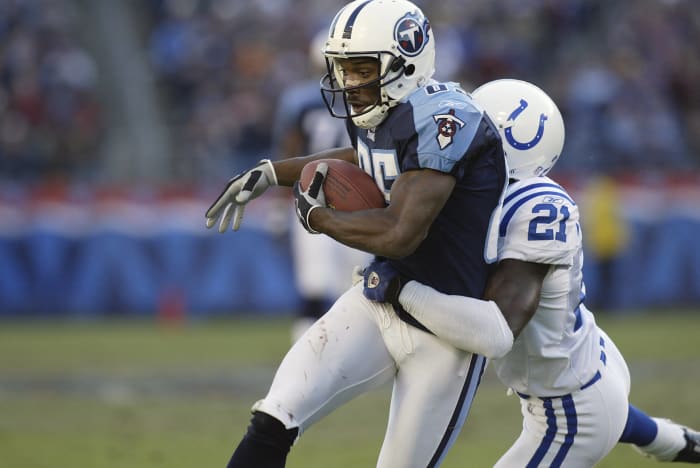
Sitting $27 million over the 2005 salary cap, a bigger number at that point considering the cap was $85.5M, Tennessee cut its No. 1 wide receiver. At 31, Mason had posted four straight 1,000-yard seasons -- including a 2004 slate in which the longtime Titan led the NFL with 96 catches. This became the Ravens' gain, and Mason would soon be reunited with his longtime quarterback. Baltimore signed Mason to a five-year, $20M deal and watched him rip off four more 1,000-yard slates, remaining on the team until 2010. Mason and Steve McNair teamed up to bolster a downtrodden Raven passing game in 2006 -- a 13-3 Baltimore season.
7. Donnie Edwards, Kansas City Chiefs
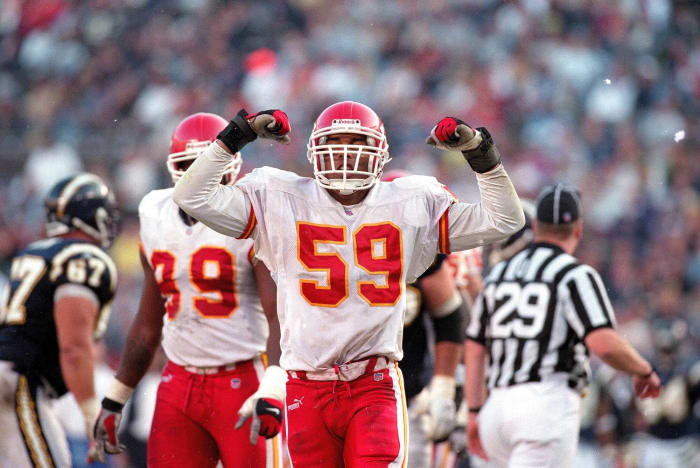
The Chiefs of the early 2000s boasted a high-flying offense, featuring Tony Gonzalez and two fellow Hall of Famers (Willie Roaf and Will Shields) upfront. These teams are largely forgotten due to a lack of defensive talent. During this period, Edwards thrived with the Chargers. The Chiefs cut Edwards in 2002; their defense caved that season. Other issues emerged, but Kansas City could have used Edwards -- who had been a five-year starter -- especially during an all-offense 13-3 season in 2003. The upper-echelon linebacker made the Pro Bowl in his first Bolts season and led the NFL in tackles in 2004, helping San Diego return to the playoffs.
6. Lorenzo Neal, Tennessee Titans

Eddie George's four-year Pro Bowl run stopped in 2001, shortly after the Titans cut his fullback. Tennessee released Neal two months after it had earned the AFC's top seed. George's yards per carry, though never flashy given his bruising style, dropped to 3.0 in 2001. The 2000 All-Pro finished with 939 rushing yards in 16 games. While the Bengals put Neal to work in front of Corey Dillon for two seasons, he etched his name in fullback lore by paving lanes for LaDainian Tomlinson. Despite blocking for Tomlinson in his late 30s, Neal earned two All-Pro honors -- the first of which coming during Tomlinson's 2006 MVP slate.
5. Darren Sharper, Green Bay Packers
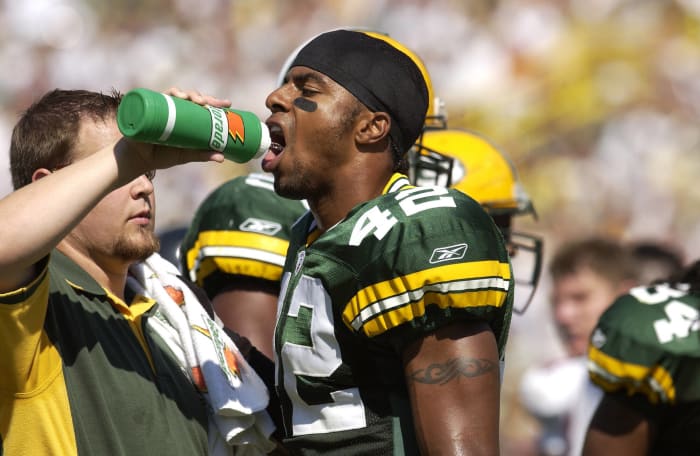
Sharper had plenty left in the tank when the Packers released him in 2005. Green Bay avoided paying the standout safety a $2.6 million roster bonus that March, but Sharper caught on quickly with the Vikings and returned to Pro Bowl form. He intercepted nine passes in 2005, posting 276 return yards and two TDs, and added another Pro Bowl two years later. Sharper made a monster impact for the Saints' 2009 Super Bowl team, setting a single-season INT return yardage record (376) in another nine-pick season. While Sharper's heinous off-field crimes later landed him a 20-year prison sentence, on the field he was well-regarded for years after leaving Green Bay.
4. Tyrann Mathieu, Arizona Cardinals
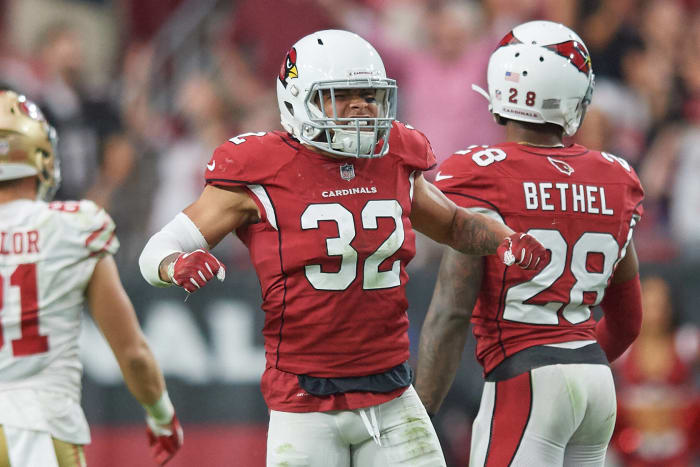
The Cardinals gave Mathieu a then-safety-record extension in 2016, signing the versatile defender to a five-year, $62.5 million deal. Shortly after Bruce Arians' first retirement, in 2018, the Cards released their All-Pro safety/slot cornerback after he refused a pay cut. While the Honey Badger rebuilt his value in Houston, he helped alter the NFL's power structure by bolstering the Chiefs' previously downtrodden defense. Mathieu's $14M-per-year Chiefs pact gave them an impact DB. Mathieu's diverse skillset, which has produced three All-Pro honors, made the biggest difference in elevating the Chiefs' defense during the team's Super Bowl-winning 2019 season.
3. Kurt Warner, St. Louis Rams
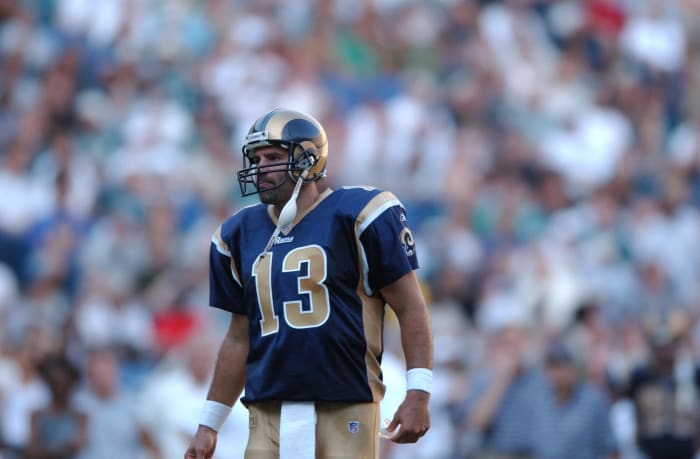
A divorce here benefited Warner, who had been benched for Marc Bulger in 2003. But the Rams making the two-time MVP a post-June 1 cut in 2004 still stripped them of a franchise-caliber QB who was not yet 33. Warner led a marginal Giants team to 5-4, before giving way to Eli Manning, and found his footing in Arizona. The ex-Arena star's late-30s renaissance, after he won his job back from top-10 pick Matt Leinart, produced the Cardinals' only Super Bowl berth and cemented Warner's Hall of Fame credentials. Bulger did not pan out for the Rams, who fell on hard times as the 2000s progressed, beginning a 12-year playoff drought.
2. Rod Woodson, San Francisco 49ers
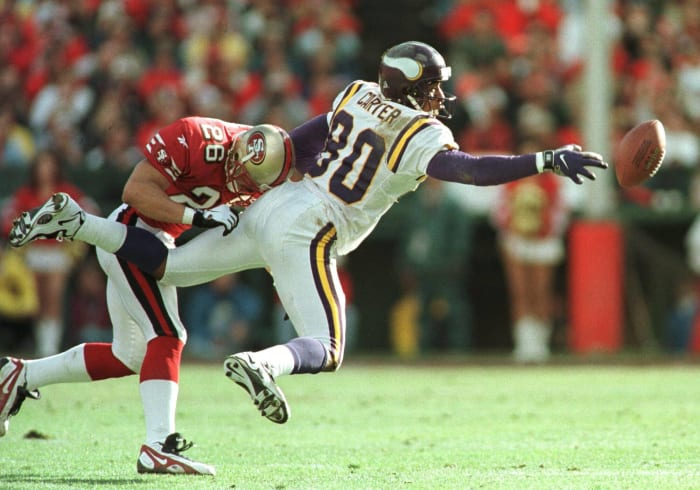
Feb. 9, 1998, became a seminal day in 49ers history. While that day's Kevin Greene release sent a pass rusher nearing the end elsewhere, the 49ers also axing Woodson led to a vital piece joining a generational defense-in-training. Cut just before his 33rd birthday, the all-time great made perhaps the signature cornerback-to-safety transition a year later. Four more Pro Bowls and two Super Bowl starts followed. Woodson gave a young Ravens secondary a veteran presence, powering one of the NFL's great defensive runs. He led the NFL in INTs in 1999 and 2002, the latter season for a Super Bowl-bound Raider squad. The 49ers became a fun footnote on Woodson's resume.
1. Rodney Harrison, San Diego Chargers
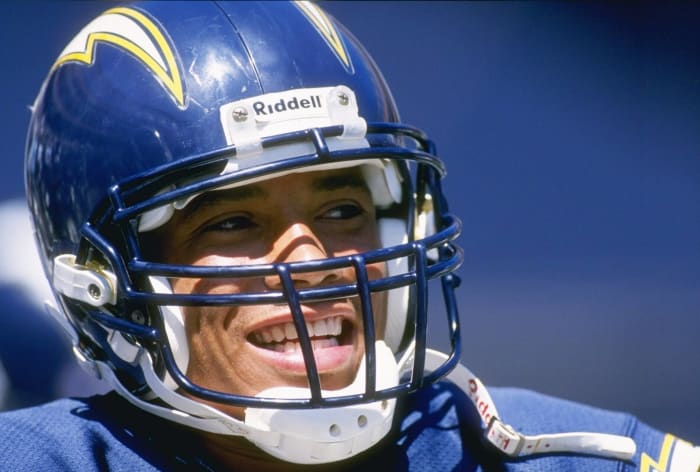
Harrison played on a torn groin for the 2002 Chargers, but the team cut the 30-year-old safety amid a February 2003 salary cap purge that also included wideout Curtis Conway's release. Harrison carried a polarizing reputation in San Diego, being fined repeatedly for illegal hits, but the Bolts could have used the veteran during their mid-2000s ascent. They instead spent years shuffling through cogs at strong safety. Harrison shined for the Patriots, who won Super Bowls in his first two seasons. Harrison, who intercepted four passes in the 2004 playoffs, played six New England seasons and retired as one of his era's top safeties.
Sam Robinson is a Kansas City, Mo.-based writer who mostly writes about the NFL. He has covered sports for nearly 10 years. Boxing, the Royals and Pandora stations featuring female rock protagonists are some of his go-tos. Occasionally interesting tweets @SRobinson25.
More must-reads:
- Top free-agent WRs still available after Odell Beckham, Chase Claypool signings
- Dolphins add another star playmaker on offense
- The 'AP First-Team All-Pro tight ends' quiz
Breaking News
Customize Your Newsletter
 +
+
Get the latest news and rumors, customized to your favorite sports and teams. Emailed daily. Always free!
Use of this website (including any and all parts and
components) constitutes your acceptance of these
Terms of Service and Privacy Policy.

